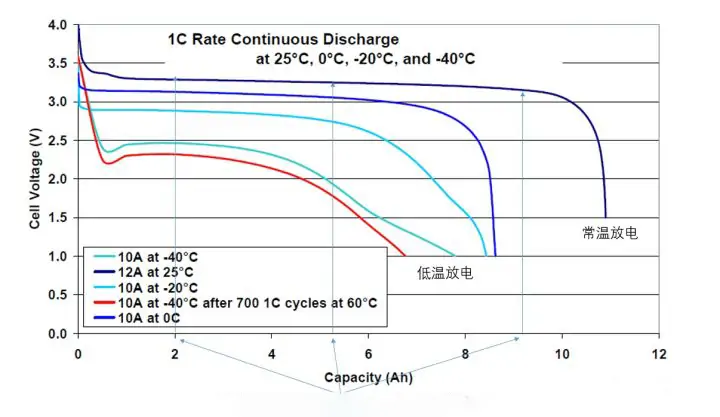
LiFePO4 batteries, also referred to as lithium iron phosphate batteries, have become increasingly popular due to their high energy density, long cycle life, and improved safety characteristics. However, to fully leverage their performance and extend their lifespan, it is essential to understand and properly manage their operating temperature range. This article explores the concept of the LiFePO4 battery temperature range, its importance, and its influence on overall battery performance.
The temperature range defines the specific limits within which a LiFePO4 battery operates most effectively. Since temperature significantly affects the electrochemical processes inside the battery, it plays a critical role in determining performance, efficiency, and service life. A thorough understanding of this temperature range is vital for getting the most out of LiFePO4 batteries.
Operating Temperature Range of LiFePO4 Batteries
LiFePO4 batteries perform best within a specific temperature window, which includes both lower and upper limits. Straying outside this range can negatively impact capacity, efficiency, and safety.
The typical low-temperature limit for LiFePO4 batteries lies between -20°C and -10°C. Using the battery below this range may result in diminished capacity and slower discharge rates. In extremely cold environments, the battery might even experience limited functionality.
On the higher end, the recommended maximum operating temperature generally ranges from 45°C to 60°C. Exceeding this limit can lead to faster self-discharge, reduced capacity, and an increased risk of safety issues such as thermal runaway.
Cold Temperature Considerations
Low temperatures can significantly affect LiFePO4 battery performance. In cold conditions, the battery’s usable capacity drops, resulting in lower energy output. Discharge rates also slow down, reducing overall efficiency. To minimize these effects, certain precautions can be taken.
Insulation and thermal management are key to maintaining battery performance in cold climates. Proper insulation or the use of thermal management systems helps keep the battery at a stable temperature and prevents excessive cooling. Battery heating systems can also be used to raise internal temperatures and improve performance in cold settings.
Hot Temperature Considerations
High temperatures can be just as harmful to LiFePO4 batteries as low ones. Elevated temperatures increase the rate of self-discharge, reducing capacity and energy storage efficiency. Direct sunlight or prolonged exposure to high heat can worsen these effects. Implementing appropriate cooling strategies is essential.
Heat dissipation and cooling methods are crucial in hot environments. Adequate ventilation, heat sinks, or active cooling systems can help remove excess heat and maintain a safe operating temperature. It is also important to shield batteries from direct sunlight to avoid overheating and preserve performance.
Using LiFePO4 batteries in extremely cold or hot conditions can cause serious harm. Extreme cold may lead to permanent damage to battery components and increase the risk of thermal runaway. Extreme heat, meanwhile, can speed up degradation, shorten battery life, and compromise safety. To address these risks, suitable countermeasures should be applied.
Temperature regulation systems are particularly useful in extreme environments. These systems monitor and control battery temperature to keep it within the safe operating range. Incorporating thermal monitoring and protection mechanisms adds an extra layer of safety, helping prevent potential hazards.
To ensure long-lasting and reliable performance, it is important to keep LiFePO4 batteries within their recommended temperature range. Consistently operating within this range helps maintain capacity, efficiency, and overall battery health. Following best practices in temperature management is essential.
When batteries are not in use, proper storage is crucial. Storing them in a controlled environment within the suggested temperature range helps prevent degradation and prolongs service life. During operation, continuous temperature monitoring and control are necessary to quickly address any temperature-related concerns.
Different applications may have unique temperature requirements for LiFePO4 batteries. For example, in electric vehicles (EVs), temperature greatly influences driving range and performance. Effective thermal management systems in EVs help regulate battery temperature, optimizing both range and vehicle operation.
In renewable energy storage systems, such as those used in solar or wind power, temperature also affects energy storage efficiency. Proper climate considerations—including adequate ventilation and insulation—help maintain the ideal temperature range for efficient energy storage and discharge.
Next:Gotion's "Jinshi" All-Solid-State Battery Enters Pilot Production
Previous:EVE Energy Shines at Solar & Storage LIVE KSA 2025, Powering Saudi Vision 2030